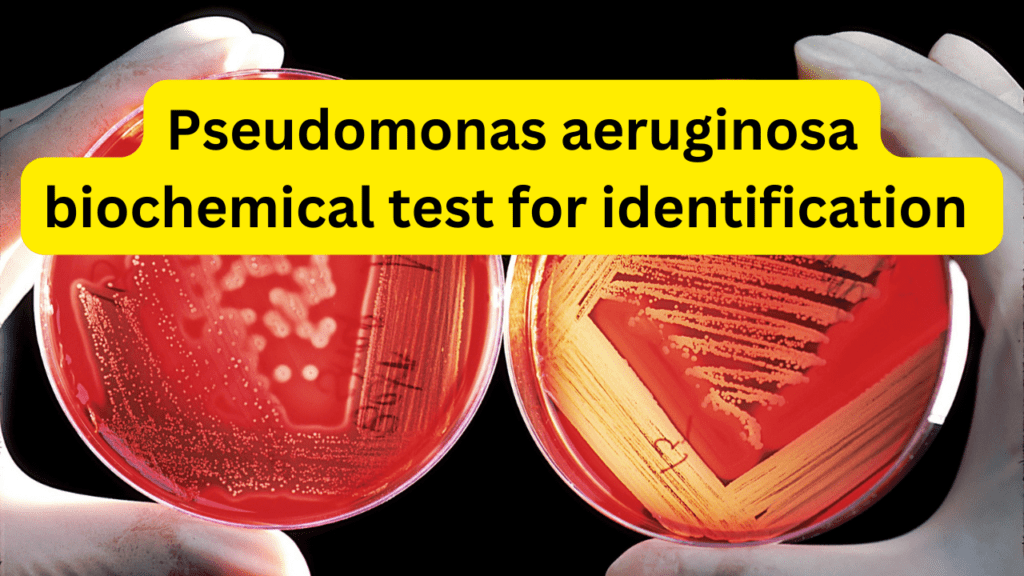Here you will learn about what is Pseudomonas aeruenosa and Pseudomonas aeruginosa biochemical test for identification.
Pseudomonas aeruginosa is a versatile, Gram-negative bacterium with clinical significance.
It is Known for its resilience.This opportunistic pathogen often infects immunocompromised individuals, causing a wide range of infections, including pneumonia, urinary tract.
Its inherent resistance to many antibiotics, owing to efflux pumps and biofilm formation, presents a significant challenge in healthcare settings.
This bacterium thrives in diverse environments, from soil and water to medical equipment, making it a concern for nosocomial infections.
Pseudomonas aeruginosa biochemical test for identification in microbiology
Identification of Pseudomonas aeruginosa typically involves a series of biochemical tests. Here is a list of some commonly used tests for its identification:
- Oxidase Test: P. aeruginosa is oxidase-positive, meaning it produces the enzyme cytochrome oxidase.
- Catalase Test: P. aeruginosa is catalase-positive, causing the production of bubbles when hydrogen peroxide is added.
- Gram Staining: P. aeruginosa is Gram-negative and appears as pink/red rods under the microscope.
- TSI Agar Test: P. aeruginosa usually exhibits alkaline slant (red) and acid butt (yellow) with no gas or H2S production.
- Growth at 42°C: P. aeruginosa can grow at higher temperatures, distinguishing it from some other bacteria.
- Methyl Red Test: It is negative for the methyl red test, indicating weak acid production.
- Citrate Utilization Test: P. aeruginosa is typically positive for citrate utilization, causing the medium to turn blue.
- Gelatin Hydrolysis Test: P. aeruginosa is positive for gelatin hydrolysis, causing the medium to liquify.
- OF (Oxidation-Fermentation) Test: P. aeruginosa usually shows oxidative metabolism.
These tests, along with other confirmatory tests, help in the accurate identification of Pseudomonas aeruginosa in clinical and laboratory settings.
